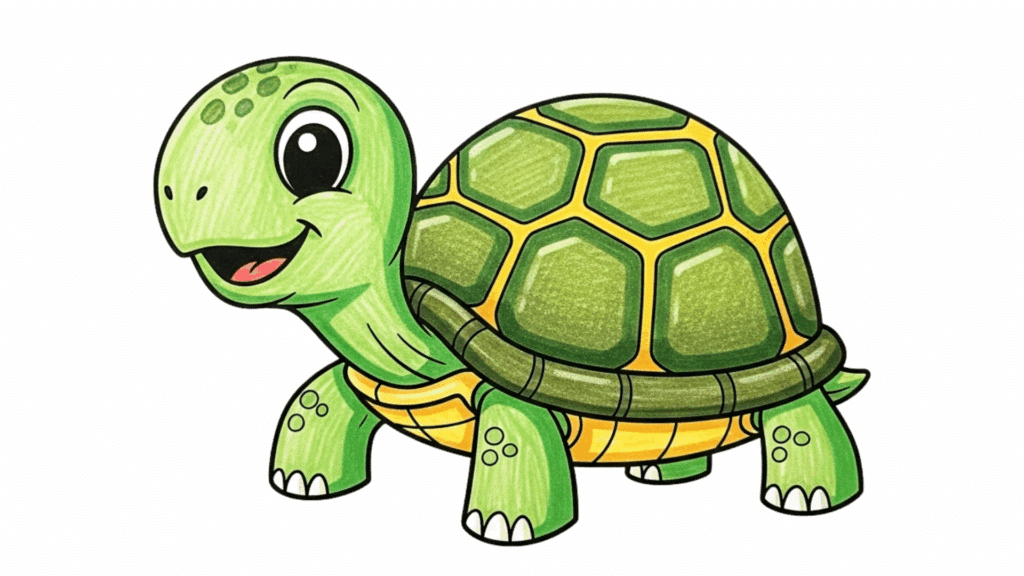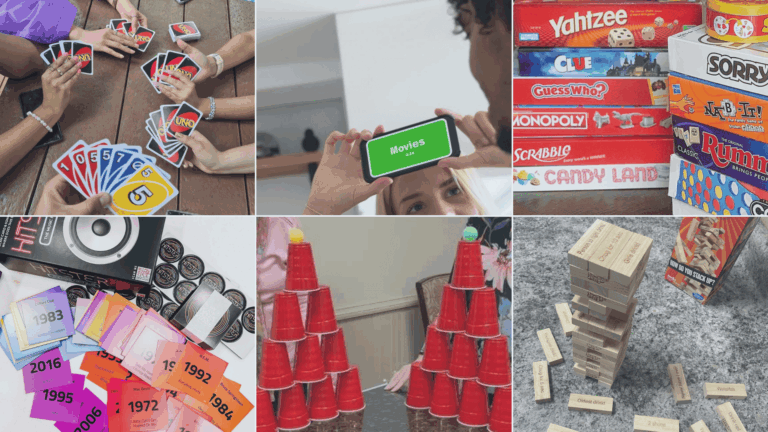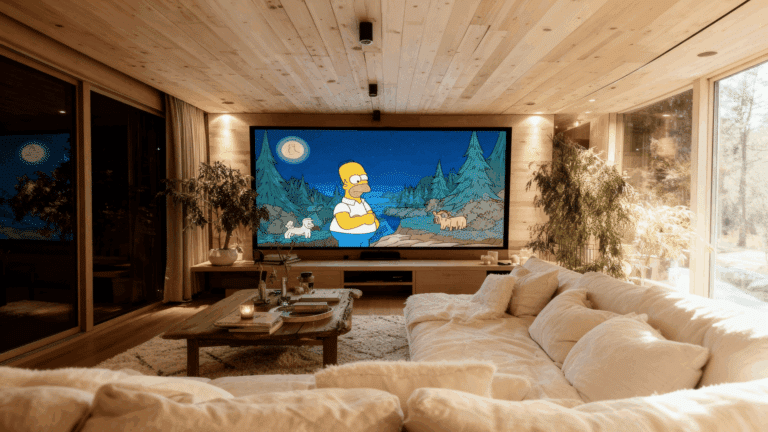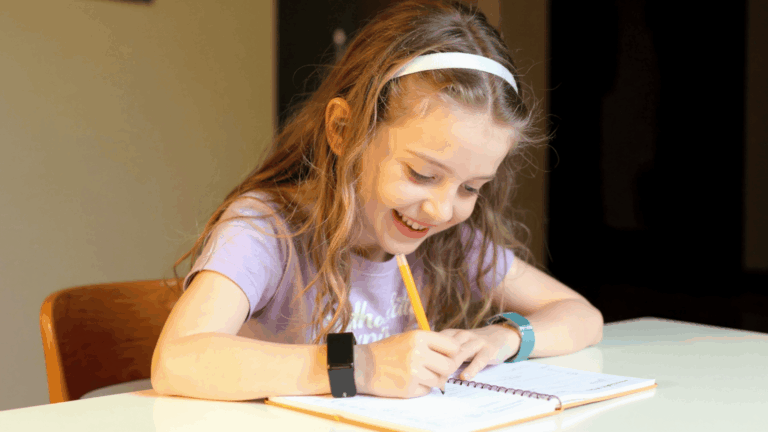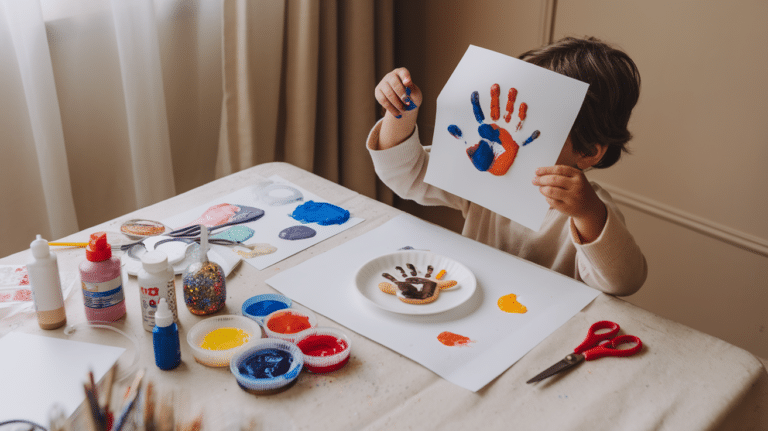Drawing can feel tough for kids when they don’t know where to start. Many children want to create cool animal drawings, but get stuck on the basic shapes and details. A turtle might seem like a complex creature to draw with its shell patterns and unique features.
This turtle drawing step by step will show kids exactly how to draw a cute turtle using simple shapes and easy-to-follow instructions. The method breaks down the drawing process into manageable steps that any child can master.
In this blog, you’ll find clear directions for drawing the shell, head, legs, and fun details. We’ll start with basic circles and ovals, then add the turtle’s distinctive features one step at a time.
Materials Required for Drawing
-
Drawing Paper – Any plain sheet will do.
-
Marker or Sharpie – Used in the tutorial, but optional.
-
Pencil or Crayon – Great alternatives if preferred.
-
Yellow Crayon or Marker – For coloring the belly and shell bottom.
-
Light Green Crayon or Marker – To fill in the shell plates.
-
Dark Green Crayon or Marker – For tracing the shell’s outline and detailing
Turtle Drawing Step-by-Step Guide
Drawing a turtle is a fun and easy way for kids to get creative and practice their art skills.
The following is a turtle drawing step by step. We’ll guide you through each simple shape and line, making it perfect for young artists of all ages.
1. Draw the Turtle’s Shell Top
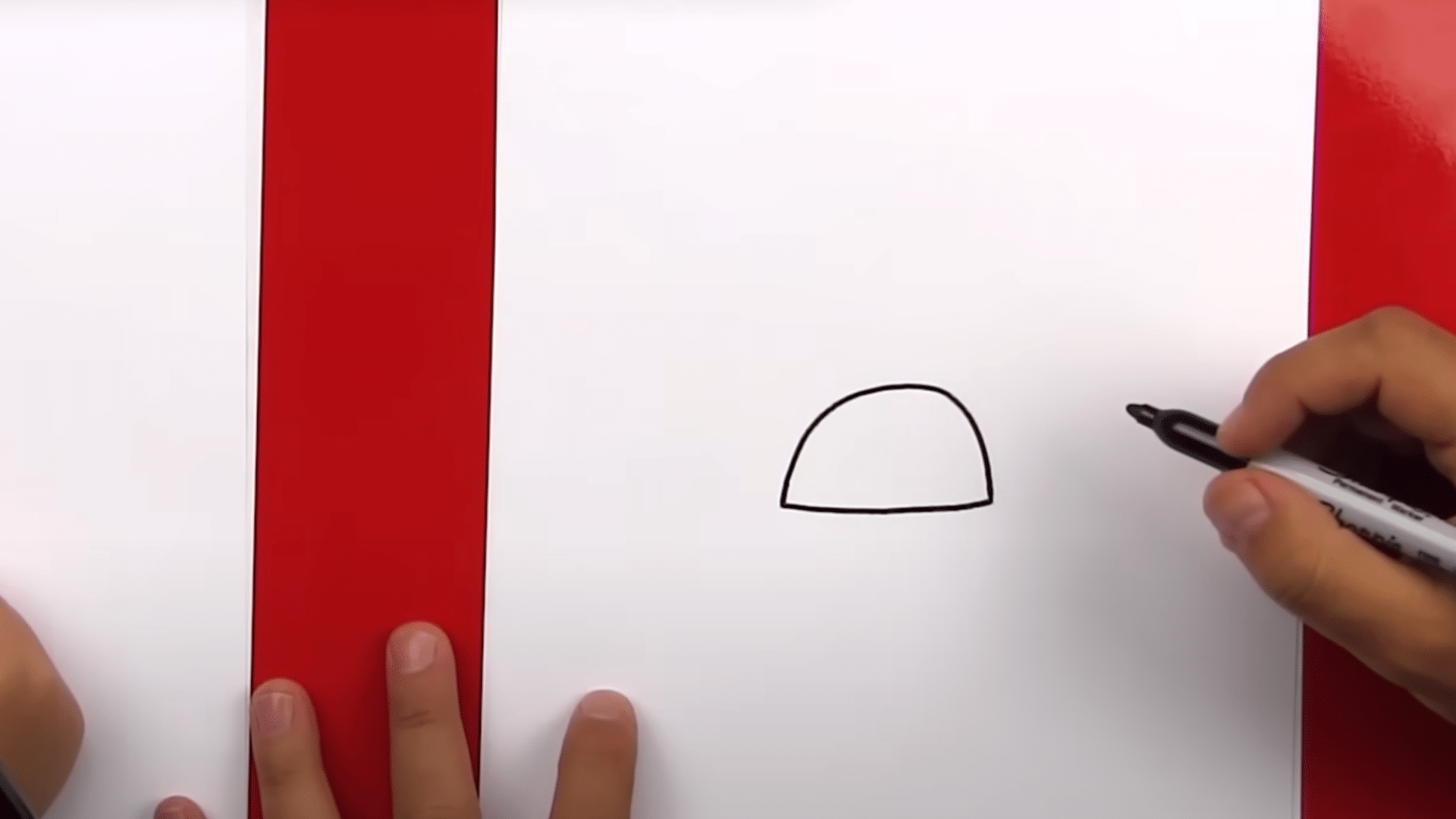
- Start by drawing a rainbow-like arc across the middle of your page.
- Place two points on the page to guide your arc’s start and end.
- Connect the two points with a smooth curve that arches like a rainbow.
This creates the top portion of the turtle’s shell, the shape should resemble a gumdrop or a half-oval.
2. Add the Bottom Shell Shape
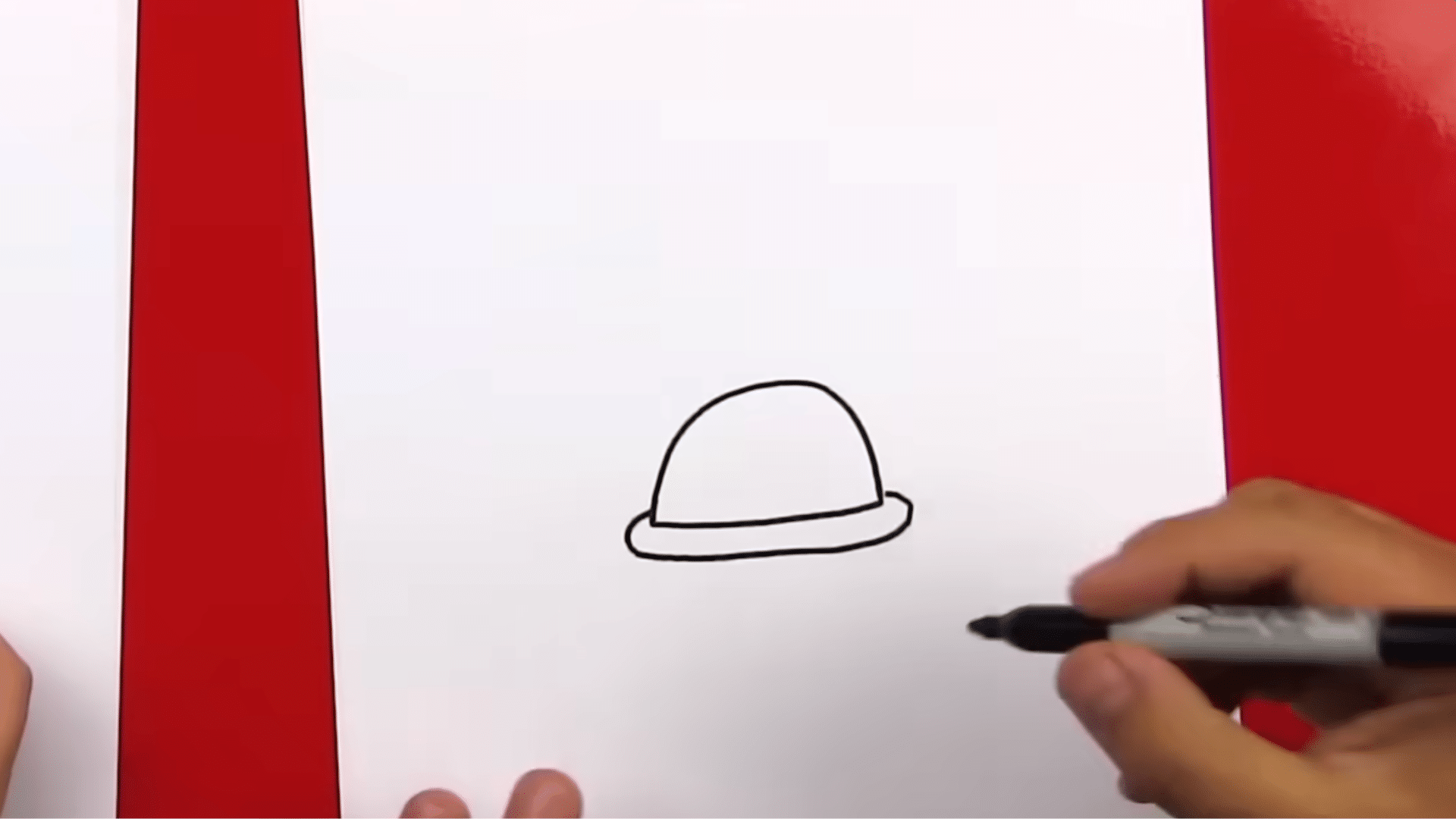
- Begin at one side of the arc’s base and draw a curved line underneath.
- Curve it outward slightly to create a hat-like bottom.
- Bring the curve back to meet the opposite side of the shell.
This completes the entire outline of the turtle’s shell; the full shell now resembles a rounded dome with a base.
3. Create the Shell’s Pattern
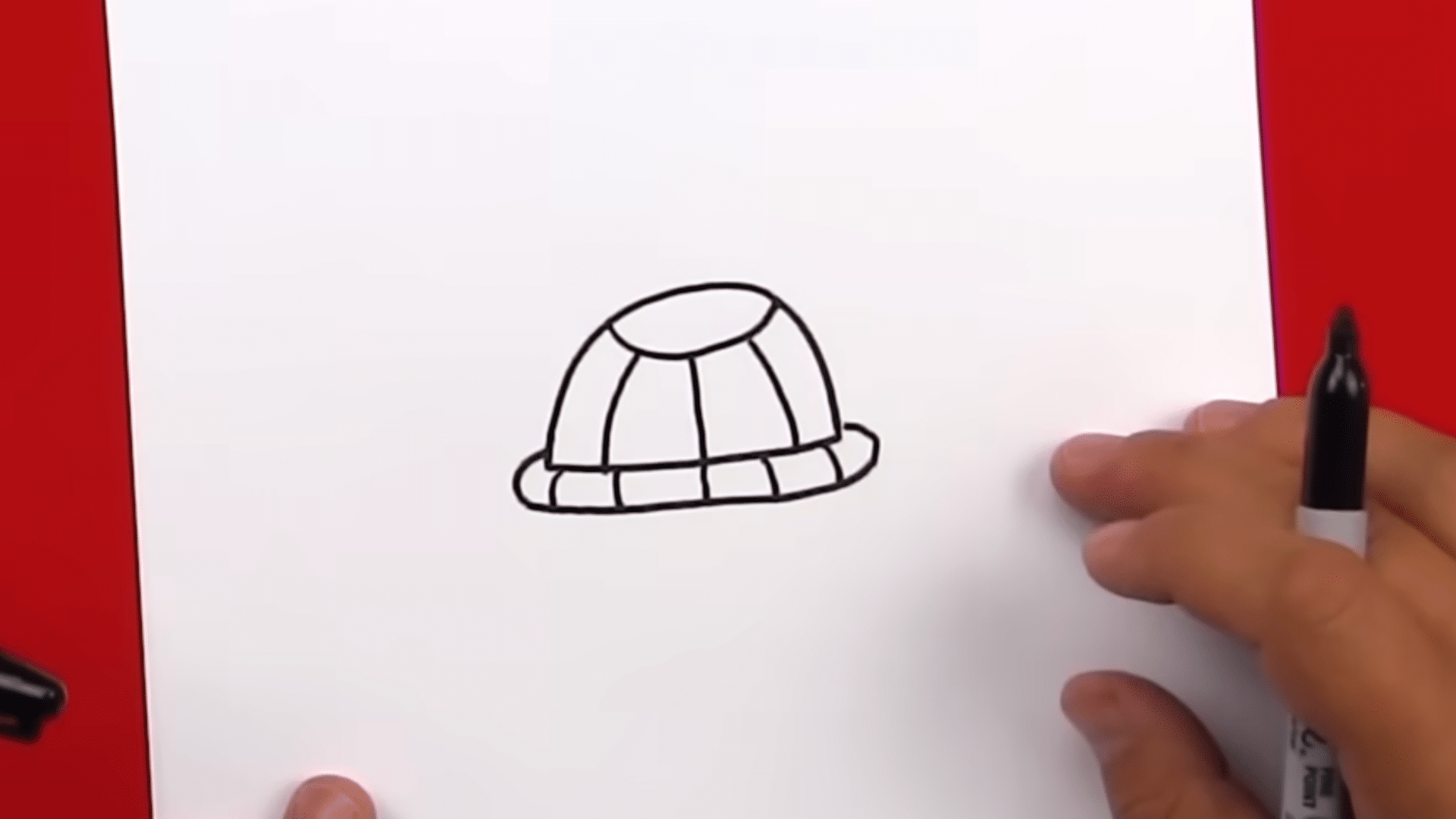
- Draw short horizontal lines across the bottom curve to form stripes.
- Space them evenly or as close as you like.
- Next, draw a curved smile-like line near the top of the shell.
- Add a vertical line down the middle from top to bottom.
- Finish by drawing two curved lines on either side of the vertical one.
4. Draw the Head and Neck
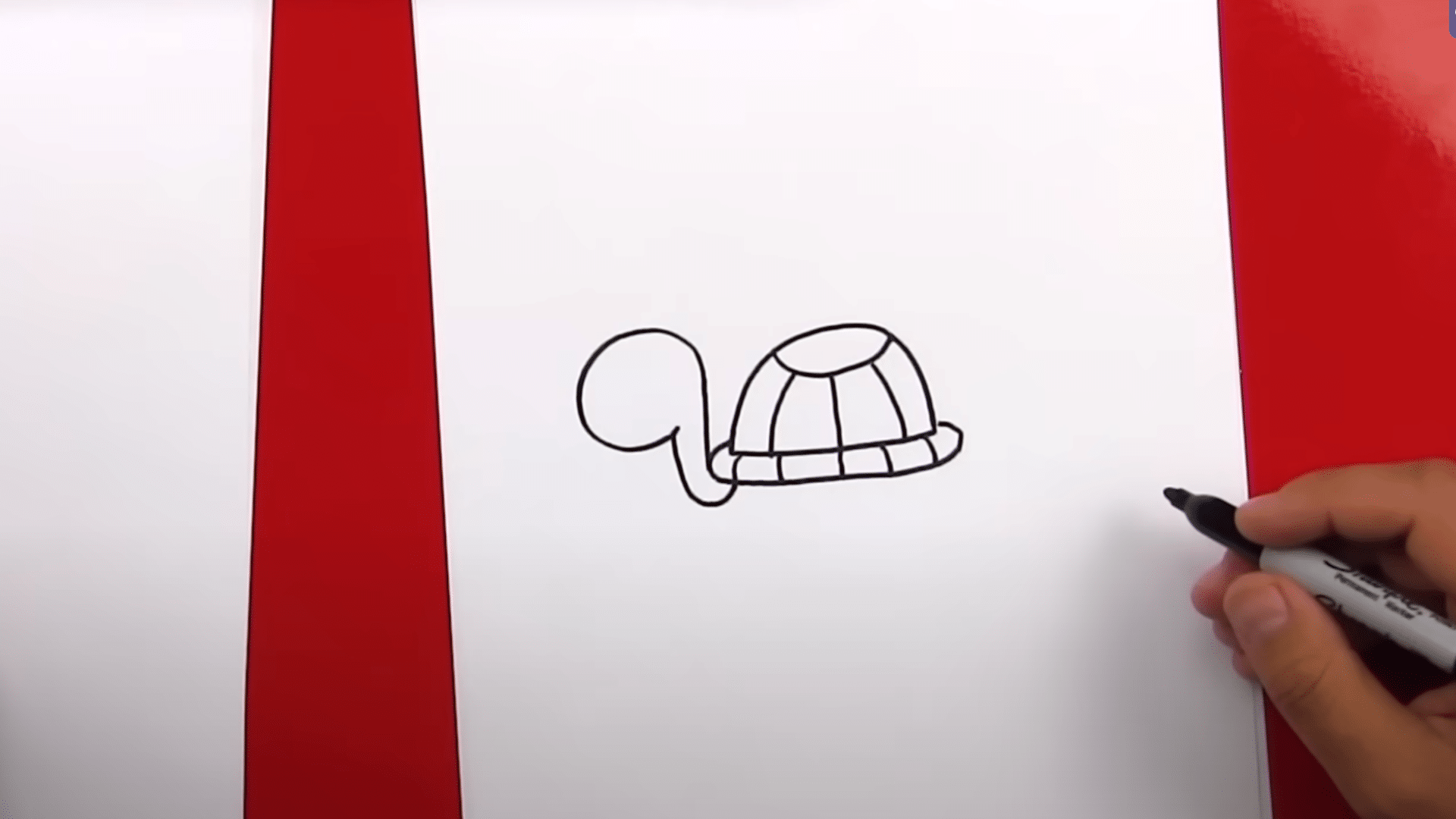
- Start a straight vertical line from the right side of the shell.
- From the top of that line, draw a large “C” shape to form the head.
- Curve the line down and back to the base of the neck.
This makes the head appear round and connected to the body, ensuring the neck ends where the shell begins for a natural look.
5. Add the Eyes
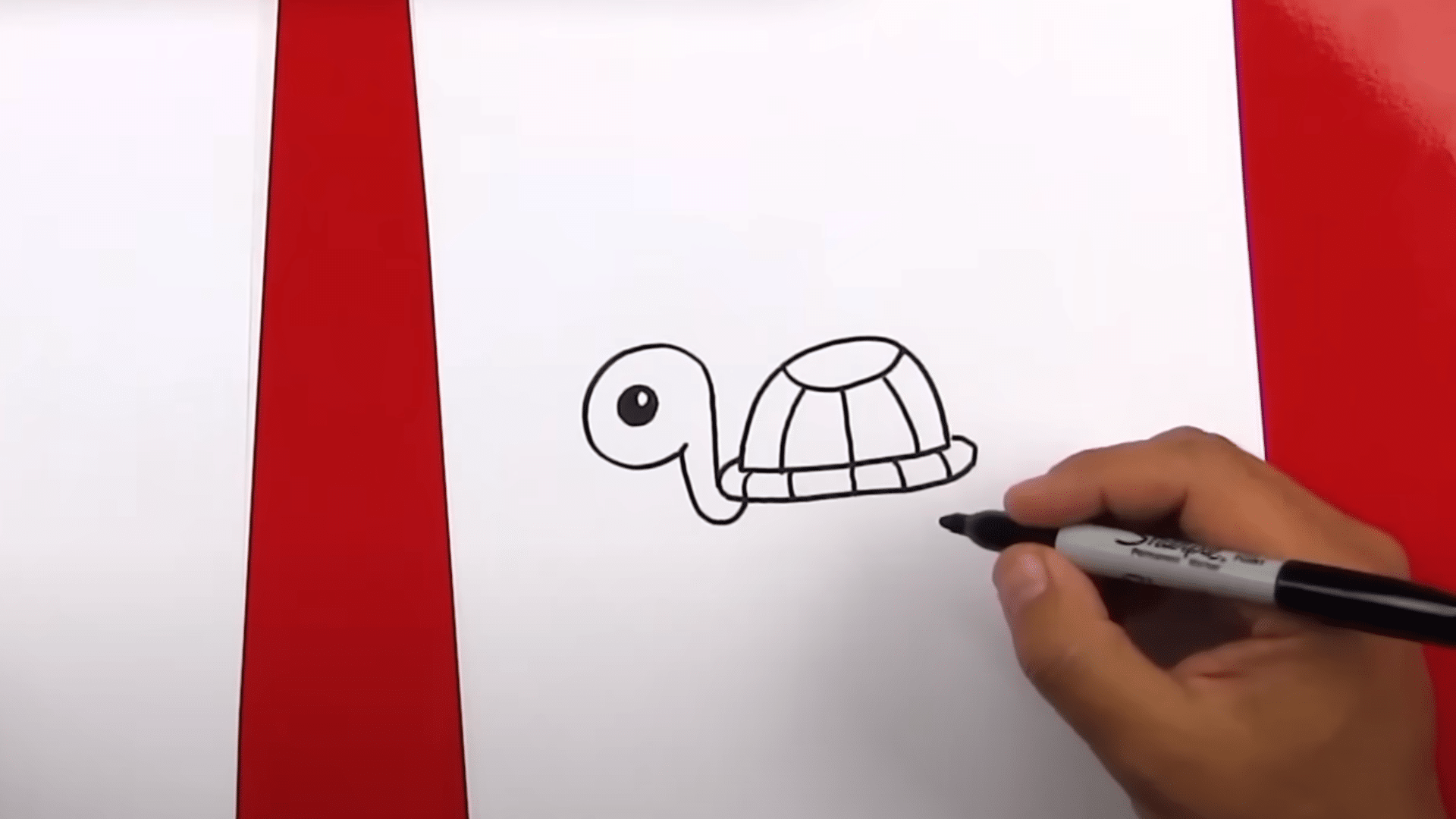
- Inside the head, draw a medium-sized circle for the eye.
- Add a small circle within it to create a shiny effect.
- Color in the larger circle, but leave the smaller one white.
This adds a gleaming cartoonish eye to the turtle, placing the eye in the center of the head’s front.
6. Draw the Front Leg
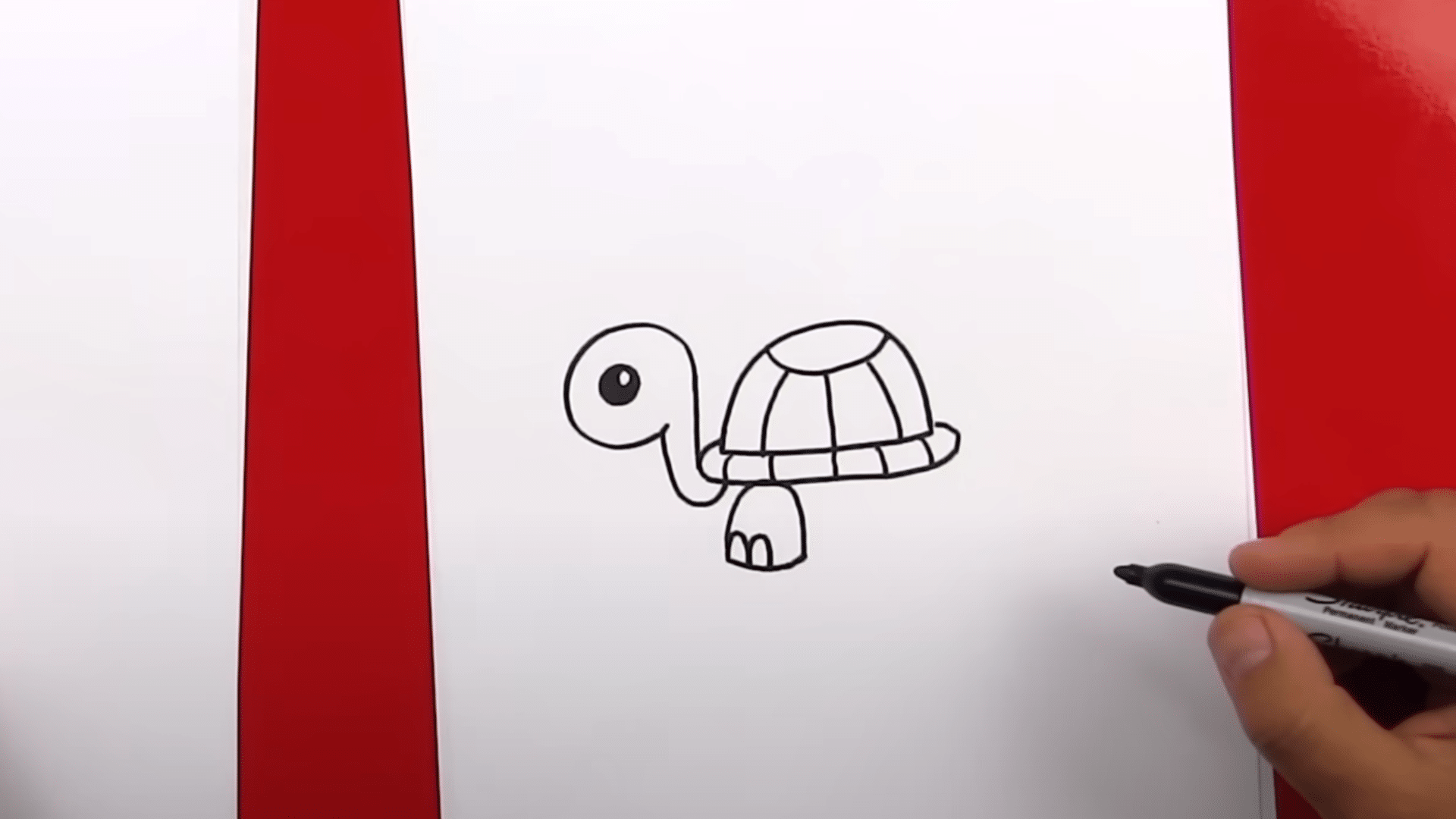
- On the front underside of the shell, draw an upside-down “U.”
- Connect the ends of the U with a horizontal line to form the foot.
- Below that, draw two small bumps to suggest toes like a curved “M”.
- The leg should touch the shell at its top.
7. Add the Back Leg
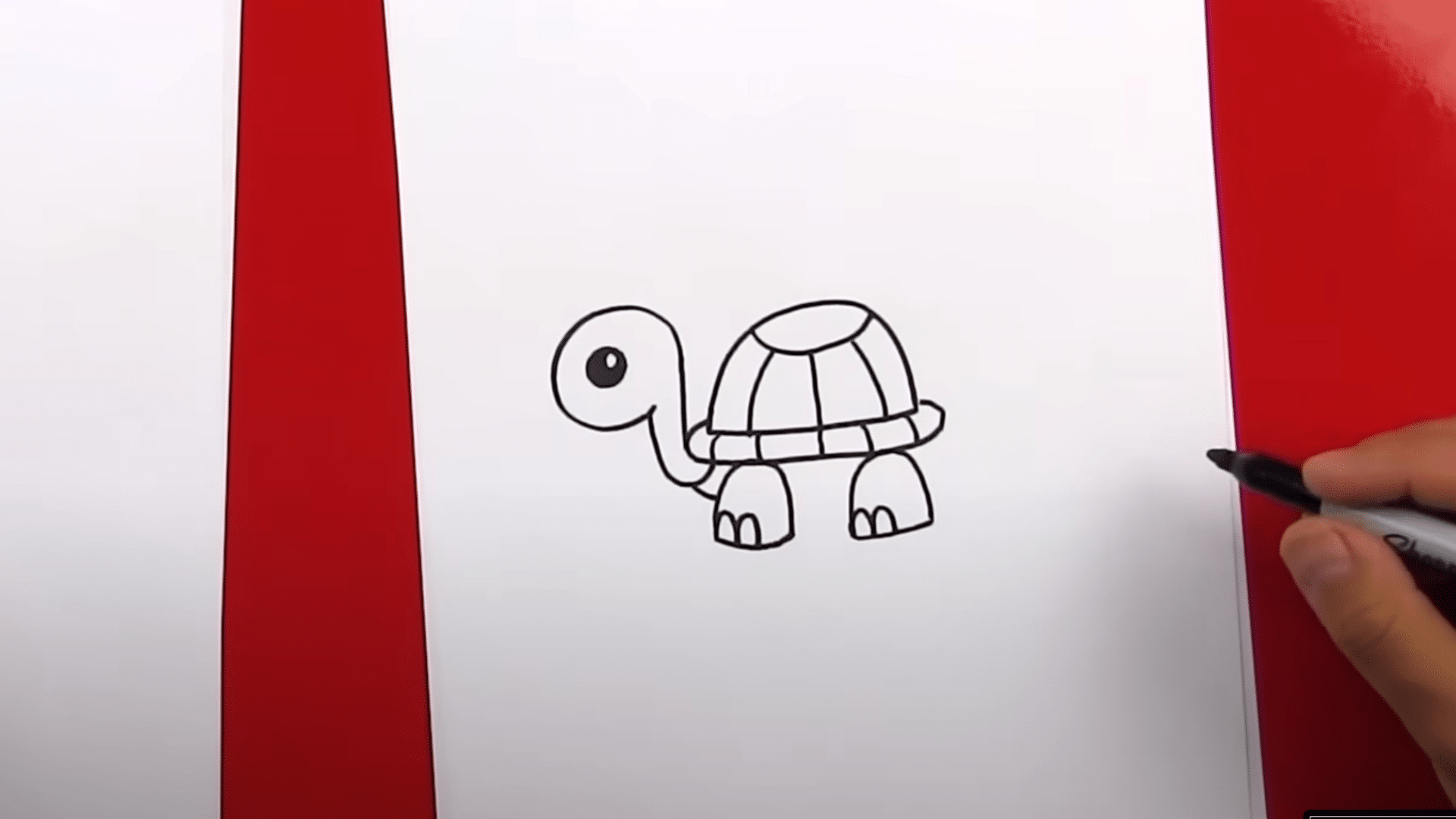
- Repeat the upside-down “U” to make the back leg, similar in size to the front leg.
- Connect the ends of the U with a curved line for the foot.
- Add two small bumps under this line to suggest toes.
- This balances the turtle’s posture with two side legs.
8. Draw the Belly and Tail
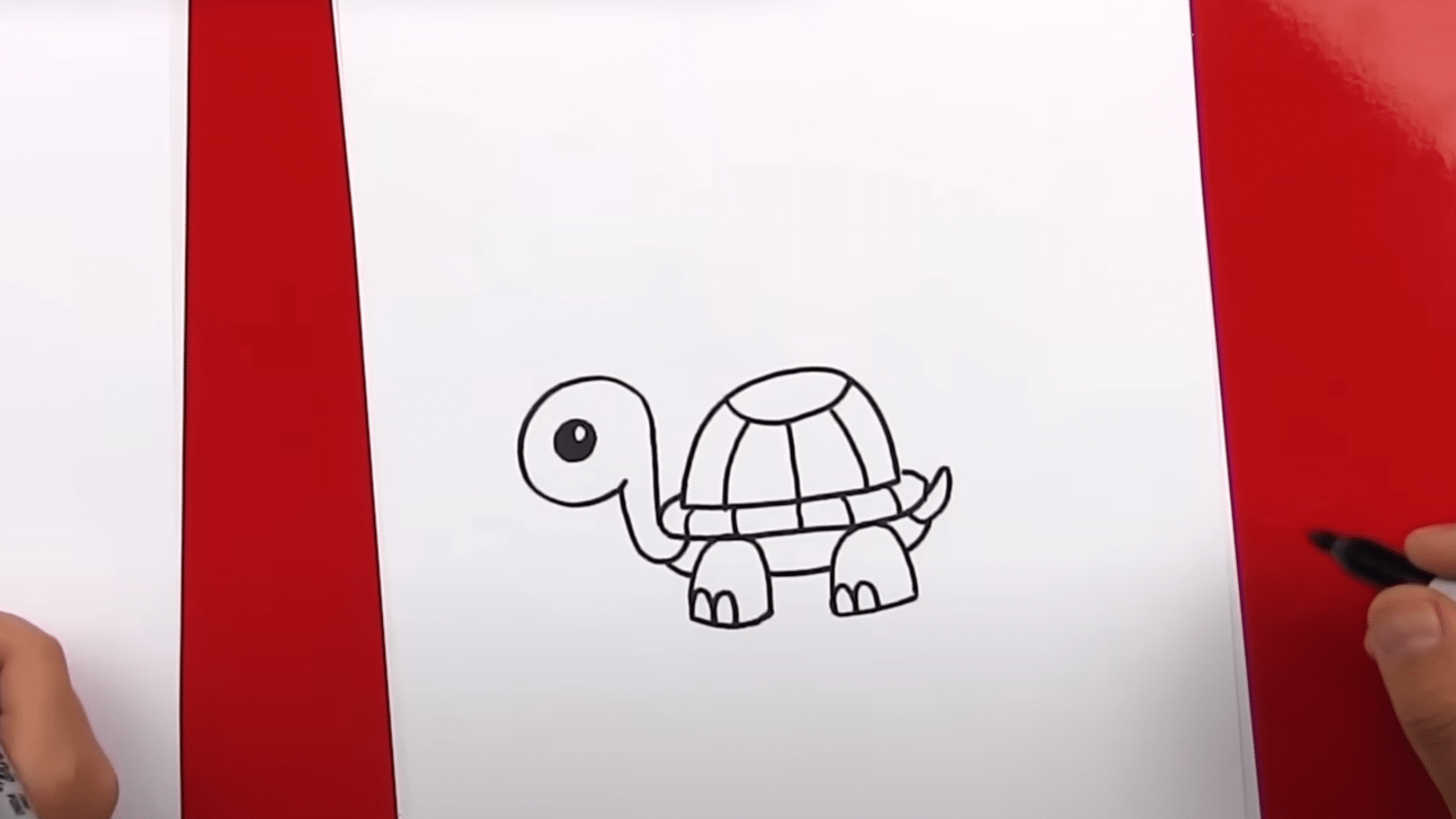
- Draw a line from the neck down to the front leg’s top.
- Connect a curved line between both legs under the shell.
- From the back, draw a short curved tail extending outward.
- Add another line to connect the belly curve to the tail.
- Optionally, extend the tail for added effect.
9. Add the Hidden Legs
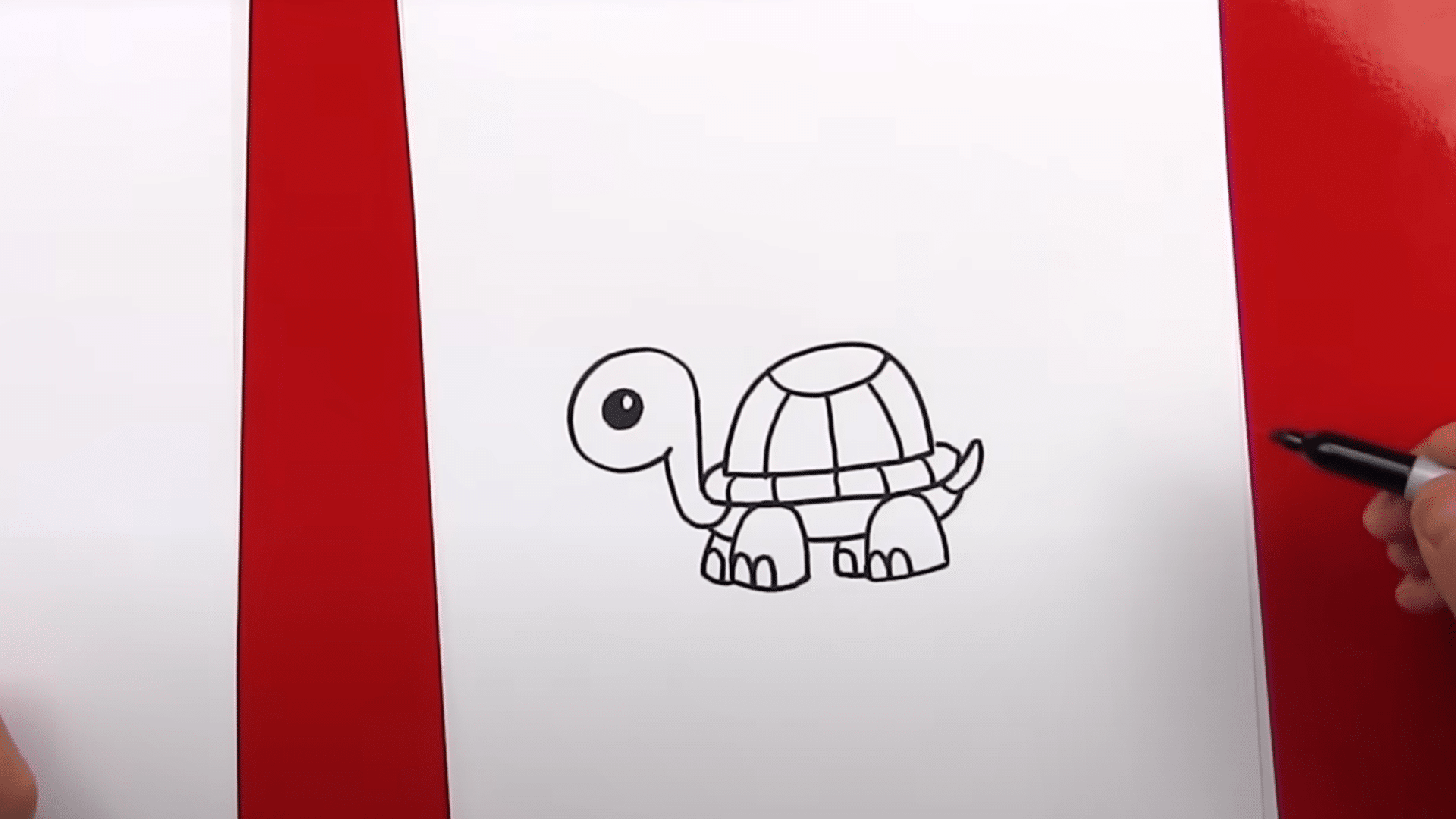
- On the front, draw an L-shaped line under the shell’s front side, representing a partially hidden leg.
- For the back, draw another short line downward and then curve it in.
- Add one small bump on each new leg to show a toe.
- This gives the turtle all four legs.
10. Decorate the Belly and Color
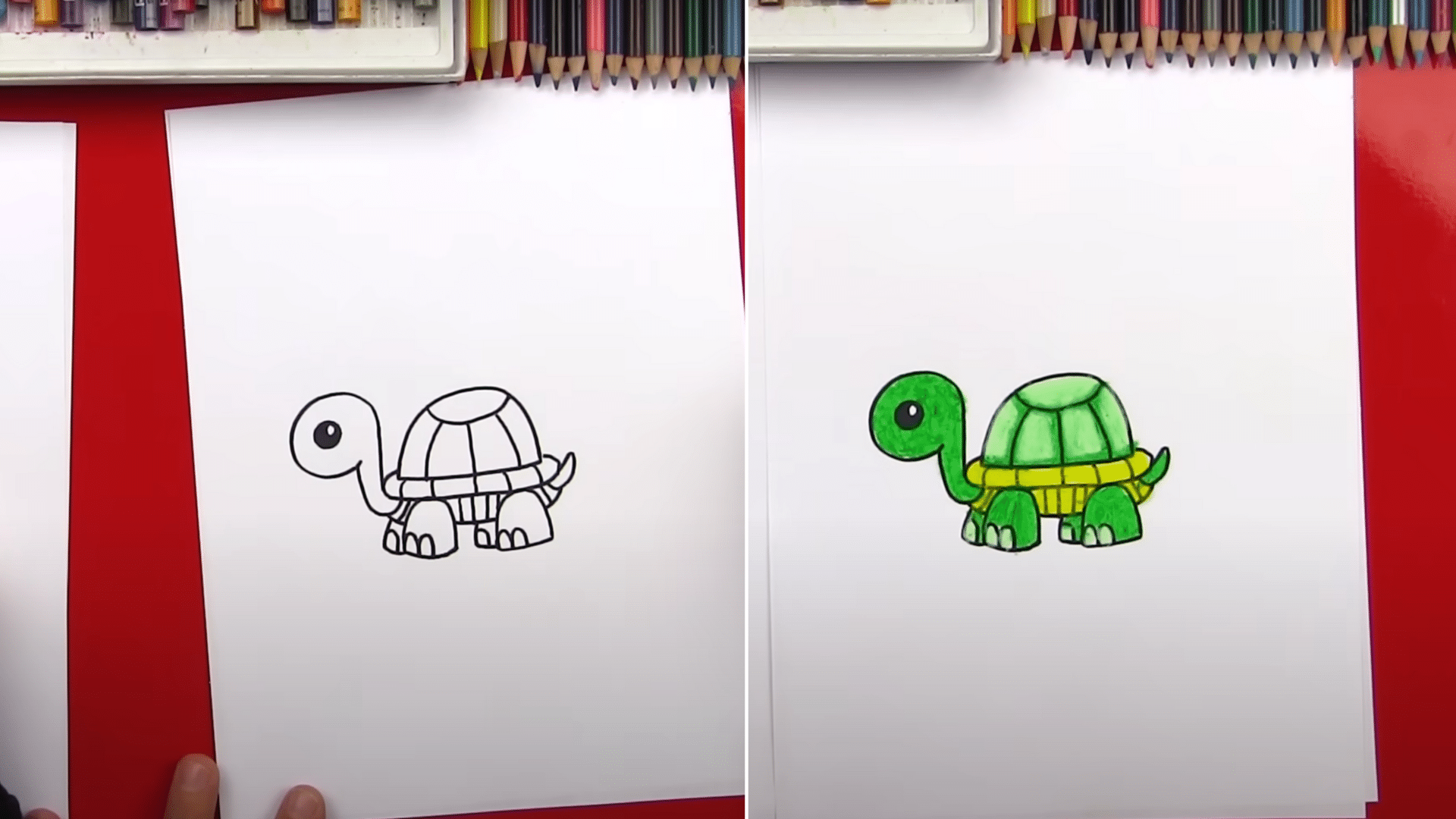
- Draw two vertical lines across the belly to add shell segments.
- Use a yellow color for the belly and bottom stripes.
- Trace over all shell outlines with dark green first.
- Fill the inner shell spaces with light green to create contrast.
Enjoy the finished turtle, and remember, the most important part is to have fun while drawing or teaching your kid this turtle drawing step by step.
Quick Facts: Fun Turtle Trivia for Kids
Turtles are some of the most interesting creatures on Earth, with over 350 different species found all around the world, from tiny pond turtles to giant sea turtles that glide through the oceans. The following are some turtle trivia for kids.
1.How old can turtles live to be?
Some turtles, like the Galápagos tortoise, can live over 100 years, making them some of the longest-living animals on Earth!
2. Why do turtles have shells?
A turtle’s shell is like a portable home and armor, protecting them from predators and harsh environments.
3. Can turtles leave their shells?
No, a turtle’s shell is part of its body, fused to its spine and ribs, so they can’t crawl out of it.
4.What do turtles eat?
Turtles can be herbivores, carnivores, or omnivores, munching on plants, insects, fish, or even jellyfish, depending on the species.
5. How do sea turtles breathe?
Sea turtles hold their breath underwater for hours but must come to the surface to breathe air through their lungs.
6.Where do turtles live?
Turtles live everywhere except Antarctica, from oceans and rivers to forests and deserts.
7. How do baby turtles find the ocean?
Baby sea turtles use the moonlight reflecting on the water to guide them to the ocean after hatching.
8. What’s the biggest turtle in the world?
The leatherback sea turtle is the largest, growing up to 7 feet long and weighing over 2,000 pounds!
9. Do turtles have teeth?
Turtles don’t have teeth; they use their sharp, beak-like mouths to chomp food.
10.Why do turtles hibernate?
Some turtles hibernate in winter to save energy when food is scarce, burrowing in mud or hiding in water.
11. How fast can a turtle move?
Land turtles are slow, moving about 0.13-0.3 mph, but sea turtles can swim up to 22 mph!
12.Can turtles hear well?
Turtles have poor hearing but can sense vibrations and low-frequency sounds to detect danger.
13. What’s special about a turtle’s shell?
A turtle’s shell is made of bone covered by keratin plates called scutes, which grow like human nails.
14. How many eggs do turtles lay?
Sea turtles can lay 50-200 eggs in one nest, but only a few babies survive to adulthood.
15. Why are turtles cold-blooded?
Being cold-blooded means turtles rely on their environment to regulate body temperature, basking in the sun to warm up.
16. What’s the smallest turtle species?
The speckled padloper tortoise from South Africa is the smallest, growing only to about 4 inches long.
17. Can turtles live in freshwater?
Yes, many turtles, like red-eared sliders, thrive in ponds, lakes, and rivers.
18. How do turtles protect themselves?
Turtles hide in their shells, swim away, or even bite to stay safe from predators.
19. Why do turtles have long necks?
Some turtles, like snapping turtles, have long necks to reach out and catch prey or defend themselves.
20. What’s a group of turtles called?
A group of turtles is called a bale, nest, or turn, depending on the context.
21. Are turtles related to dinosaurs?
Turtles evolved over 200 million years ago, so they shared the Earth with dinosaurs and are distant relatives!
Wrapping It Up
Your child now has all the tools needed to create their turtle masterpiece!
We’ve covered each step from the basic shell outline to adding those final, touching details that bring the drawing to life.
Turtle drawing step by step helps kids build confidence in their artistic abilities. Each completed turtle represents a small victory that encourages them to try new drawing challenges. The simple techniques we shared here work for many other animals, too.
What animal would you like to see your child draw next? Share their turtle creations and let us know what tutorial you’d find helpful!


